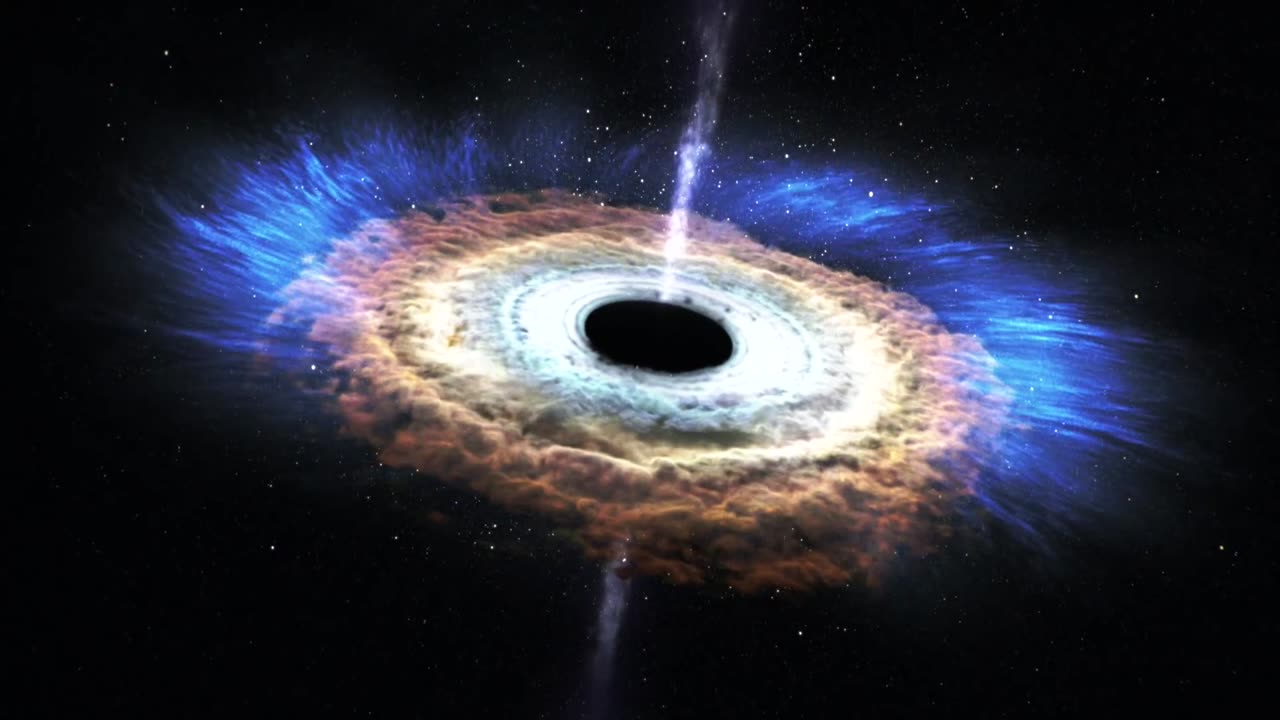Premium Only Content

Massive Black hole shreds passing stars
NASA | Massive Black Hole Shreds Passing Star
6.2M views · 7 years ago...more
NASA Goddard
1.5M
Subscribe
17K
Share
Save
Report
Comments902
Arouba Kamal
Add a comment...
All
Black holes
Galaxies
Related
For you
Recently uploaded
Watched
Up next
8:25
The Secret Behind 369 Code | The Signature of Allah | Most Mysterious Numbers in Quran
Infomentry•357K views
0:30
Black Hole Edit 4K | voice credit - @AstroKobi
77Unknxwn•4.2K views
35:15
1000 Rupees SE 50 Hazar Rupees Bana | Episode 1
Waqar Zaka•447K views
2:29
Psyche Mission Charting a Metallic World by Nasa
wrap Info
New
18 views
3:30
I Jumped From Space (World Record Supersonic Freefall)
Red Bull•11M views
1:44
NASA Sizes Up the Universe’s Biggest Black Holes
thebhp•8.1K views
2:39
Black Holes in Space – An Abstract Journey
Reels & Music Videos •293 views
10:35
Earth's Evolution in 10 Minutes
What If•721K views
5:56
Black Holes Explained – From Birth to Death
Kurzgesagt – In a Nutshell•22M views
0:52
Finally, NASA sees a Black Hole eating a star! #shorts
Curious Plus•29K views
28:58
HOW IT WORKS: The International Space Station
DOCUMENTARY TUBE•106M views
0:41
Black Hole SpaceEngine
TheGalaxGame•3.8K views
Description
NASA | Massive Black Hole Shreds Passing Star
NASA Goddard
17K
Likes
6,239,009
Views
2015
Oct 21
This artist’s rendering illustrates new findings about a star shredded by a black hole. When a star wanders too close to a black hole, intense tidal forces rip the star apart. In these events, called “tidal disruptions,” some of the stellar debris is flung outward at high speed while the rest falls toward the black hole. This causes a distinct X-ray flare that can last for a few years. NASA’s Chandra X-ray Observatory, Swift Gamma-ray Burst Explorer, and ESA/NASA’s XMM-Newton collected different pieces of this astronomical puzzle in a tidal disruption event called ASASSN-14li, which was found in an optical search by the All-Sky Automated Survey for Supernovae (ASAS-SN) in November 2014. The event occurred near a supermassive black hole estimated to weigh a few million times the mass of the sun in the center of PGC 043234, a galaxy that lies about 290 million light-years away. Astronomers hope to find more events like ASASSN-14li to test theoretical models about how black holes affect their environments.
During the tidal disruption event, filaments containing much of the star's mass fall toward the black hole. Eventually these gaseous filaments merge into a smooth, hot disk glowing brightly in X-rays. As the disk forms, its central region heats up tremendously, which drives a flow of material, called a wind, away from the disk.
-
 11:05:38
11:05:38
Dr Disrespect
21 hours ago🔴LIVE - DR DISRESPECT - PUBG - 5 CHICKEN DINNERS CHALLENGE
255K23 -
 3:23:12
3:23:12
I_Came_With_Fire_Podcast
20 hours agoSHALL NOT BE INFRINGED| THE TYRANNY OF UNELECTED BUREAUCRATS | XI BOWS
70.8K9 -
 4:19:36
4:19:36
SynthTrax & DJ Cheezus Livestreams
22 hours agoFriday Night Synthwave 80s 90s Electronica and more DJ MIX Livestream THE GREAT EDO WARS OF 2067 Edition
106K10 -
 4:45:15
4:45:15
RalliedLIVE
12 hours ago $1.98 earnedWarzone Domination w/ Ral
70.2K1 -
 1:10:17
1:10:17
Sarah Westall
14 hours agoWorld Leaders Increasingly Display Panic Behavior as Economic Change Accelerates w/ Andy Schectman
110K46 -
 59:54
59:54
Motherland Casino
11 hours ago $2.50 earnedScar x Ayanna
46.6K9 -
 41:57
41:57
BonginoReport
16 hours agoProtecting Kids From WOKE Ideology in School (Ep. 35) - Nightly Scroll with Hayley Caronia -04/25/25
133K55 -
 7:17:12
7:17:12
SpartakusLIVE
14 hours agoFriday Night HYPE w/ #1 All-American Solo NUKE Hero
37.8K -
 1:15:07
1:15:07
Kim Iversen
1 day agoThe Left Is Dead — What And Who Will Rise From the Ashes?
112K120 -
 2:06:17
2:06:17
Joker Effect
11 hours agoYOU DON'T UNDERSTAND FREEDOM OF SPEECH IF THIS MAKES YOU MAD!
19.7K2